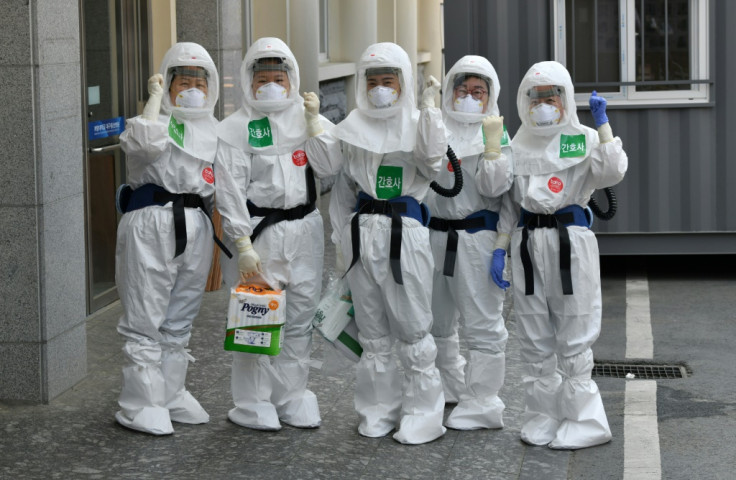Scientists study whether COVID-19 can be caused by airborne transmission
Several studies suggest that coronavirus could be caused by airborne transmission but lack a definitive conclusion.
The mystery surrounding behaviour of novel coronavirus or Sars-CoV-2 continues to baffle scientists and researchers. Meanwhile, several studies struggle to determine the mode of transmission of the highly contagious virus causing COVID-19, the severe respiratory illness.
Despite several studies, it remains unconfirmed whether COVID-19 can spread by airborne transmission or only by droplet transmission. According to the Washington Post, the debate continues as several studies suggest that "coronavirus can remain suspended in the air in aerosol particles." However, scientists are yet to give out the definitive conclusion, and no such infections caused by airborne transmission have been confirmed yet.
As per the report, it is largely believed that the disease is caused by droplet transmission that could occur when a person is exposed to potentially infective respiratory droplets of an infected person. These particles can linger in the air for hours just like some other viral infections. However, some studies have sparked debate over how coronavirus actually spreads.
A recently published study in journal Nature by scientists at Wuhan University in China found "aerosolised traces of viral genetic material, called RNA" in two hospitals, particularly in poorly ventilated spaces. The study Aerosol particles were found in a small mobile toilet where there was no air circulation. And viral RNA was discovered in the area where the staff kept their used protective gear. However, the study reportedly fails to conclude whether these airborne samples are capable of breeding and generate viral infections.
"Although we have not established the infectivity of the virus detected in these hospital areas, we propose that Sars-Cov-2 may have the potential to be transmitted via aerosols," the authors wrote. "Our results indicate that room ventilation, open space, sanitization of protective apparel, and proper use and disinfection of toilet areas can effectively limit the concentration of Sars-Cov-2 RNA in aerosols."
Pointing at the shortcomings of the Wuhan study, Andrew Noymer, an epidemiologist at the University of California at Irvine said: "The test for viable virus is a much-more-painstaking cell culture test, which the present study did not perform."
The abovementioned news publication goes on to list several such studies including the one from Guangzhou, China that claimed an infected person with no symptoms, infected nine other visitors to a restaurant. Researchers suggested that the droplets could have spread "due to an air-conditioning unit recirculating the air carrying virus."
However, Donald Milton, professor of environmental health at the University of Maryland School of Public Health suggests that there is confusion due to "common misconception that there's somehow a bright line between aerosols and respiratory droplets." He goes on to explain that these are all respiratory droplets, some large, some small. The larger droplets "behave as aerosols as the velocity of air increases, countering the pull of gravity so that they don't fall out."
The researchers remain sceptical of the findings and suggest further investigation of aerosolised particles to find out whether they are capable of breeding new infections.
"The question is, 'What is currently driving the pandemic?' If it's mostly droplet transmission, and if we do have airborne or aerosol transmission, what is the relative role? These are all big questions that I still think need to be addressed," Vincent Munster, a virologist at the Rocky Mountain Laboratories and a leading researcher on aerosolised coronavirus said.

Meanwhile, Milton is reportedly planning studies using gesundheit machine that could possibly help determine whether aerosolised particles can spread the disease that has so far claimed more than 200,000 lives and caused more than 3,300,00 confirmed cases across the globe.
© Copyright IBTimes 2025. All rights reserved.





















